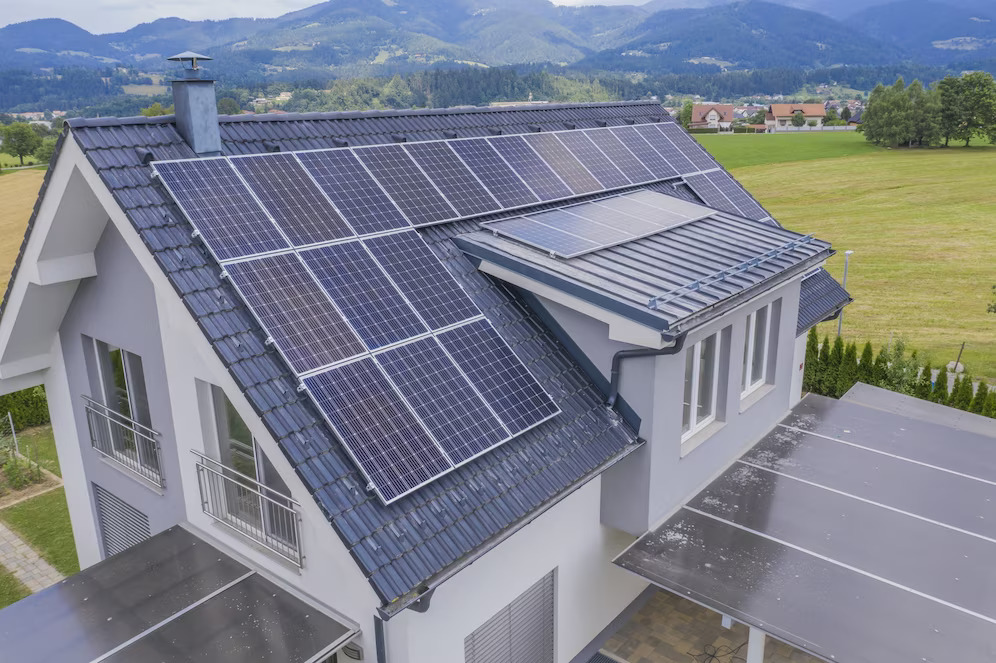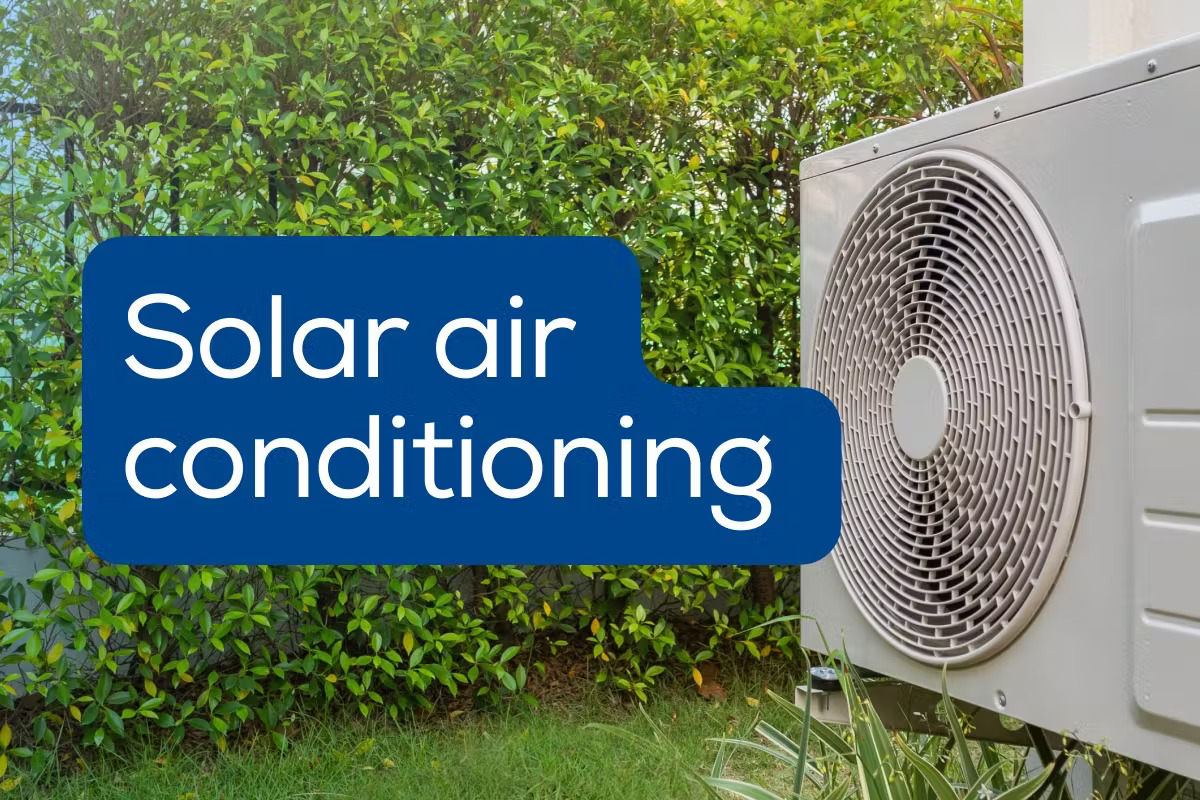Solar air conditioning: how does it work?
- 1 How does solar air conditioning work?
- 1.1 Operation of an air conditioning system
- 1.2 Solar air conditioning: using the heat of the sun to cool down
- 2 Photovoltaic solar air conditioning: free energy
- 2.1 Functioning
- 2.2 Benefits
- 2.3 Disadvantages
- 3 Solar thermal air conditioning: an independent ecological system
- 3.1 Functioning
- 3.2 Benefits
- 3.3 Disadvantages
- 4 How to install solar air conditioning?
Using an air conditioner appears to be the most effective solution for cooling your interior. Instinctively, when thinking about classic packaged air conditioning units, an aircon installation may come to mind. However, there is another particularly economical and environmentally friendly system: solar air conditioning.
How does this innovative system work?
What sets it apart from conventional units? Nature Cool, a reputable and knowledgeable provider of aircon installation services in Singapore, enlightens you about the unique features and benefits of solar air conditioning.
The essential
- Ecological, solar air conditioning produces cold air from renewable energy: the sun.
- Free, solar energy reduces your electricity consumption.
- A solar air conditioner can also be reversible and thus produce heating and hot water for your home.
How does solar air conditioning work?

The operation of a solar air conditioner is similar to that of a conventional gas air conditioner. The only difference: the system is powered by the calories contained in the sun’s rays. The device thus uses renewable energy to produce fresh air in your home.
Operation of an air conditioning system
Similar to a refrigerator, an air conditioner works by heat transfer. It draws heat from the room it is in to generate cold air.
An air conditioning system also have an outdoor unit supplemented by one or more indoor diffusers. To better understand how an air conditioner produces refrigerated air, Nature Cool details its various components:
- The refrigerant: it is contained in a closed circuit that connects the different units. In contact with the heat, it ensures the production of fresh air;
- The evaporator: located in the indoor unit, it captures the calories present in the ambient air. A heat transfer occurs: the liquid refrigerant becomes vapor and goes to the compressor;
- The compressor: placed in the outdoor unit, it compresses the vapor in order to raise its temperature. The high-pressure steam then passes through the condenser;
- The condenser: it evacuates the calories thanks to a fan, which causes a drop in the temperature of the fluid which has become liquid again;
- The expansion valve: it lowers the pressure of the fluid then cools it before reinjecting it at the level of the evaporator. The indoor unit blower can then diffuse fresh air.
Solar air conditioning uses the same operating principle, but it uses the sun’s energy to operate the compressor mechanism. It can also be reversible and therefore serve as heating during the winter season. For this, the installation of a heat pump (PAC) – which includes the air refrigeration system – will be necessary.
Solar air conditioning: using the heat of the sun to cool down
Solar air conditioning is a particularly economical and more environmentally friendly fresh air production system than a traditional air conditioner. Indeed, it uses the heat of the sun to cool your home: a green, free and unlimited energy source.
There are 2 kinds of solar air conditioners:
- photovoltaic: the mechanical compressor is powered by solar energy to operate;
- thermal: the compressor uses the sun’s calories to heat the heat transfer fluid.
The 2 systems mobilize solar panels to draw the energy necessary for their operation. The difference? While the photovoltaic supplies the compressor of the device with electricity, the thermal model draws heat to replace the electrical source. Need to see more clearly? Do not panic, the best aircon installation company in Singapore explains everything in the rest of this article!
Photovoltaic solar air conditioning: free energy
Unlike traditional photovoltaics, solar thermal air conditioning offers a unique and energy-efficient solution for cooling needs in Singapore. Instead of relying on electricity to power the compressor of the outdoor unit, this innovative system harnesses the sun’s natural energy to pressurize the fluid responsible for producing refreshingly chilled air. By integrating portable aircon installation Singapore technology with solar thermal air conditioning, you can enjoy a sustainable and eco-friendly cooling experience that reduces electricity consumption and environmental impact.
Functioning
Photovoltaic technology is used to produce the electricity needed to operate your air conditioner. The panels installed on the roof store solar calories to convert them into electrical energy. Thus, they feed the compressor of your air conditioning: its mechanical action puts the refrigerant under pressure, day and night.
How? The photovoltaic panels provide energy to the air conditioner to operate it during the day but also recharge the batteries of the installation to use it at night. They can be coupled with conventional electric air conditioning or power a reversible heat pump (PAC): a good way to save money all year round.
In addition, the panels are connected to the electrical circuit of your house. So they don’t just power your air conditioning, but your entire home. Pretty handy, right?
Benefits
Photovoltaic is the simplest solar air conditioning system to effectively cool your interior and is advantageous for 3 main reasons:
- Ecological: the electricity used to operate the device comes from renewable energy. Fossil and nuclear resources are no longer mobilized to operate the air conditioning or heat pump mechanism;
- Economical: the energy produced costs nothing and can supply all your domestic equipment. It can even be resold to suppliers in the event of a surplus;
- Accessible: photovoltaic panels are an increasingly widespread and mastered technology, with a constantly falling price;
Disadvantages
A negative point must however be raised for this type of solar air conditioning: the dependence of the system on weather conditions. Logically, the air conditioning is started when it is particularly hot and the sun is strong. But if the sky is overcast or the sunshine duration is short, the device will have less energy stored to operate.
A parameter that can be problematic for cooling your interior when it is heavy or for supplying the heat pump in winter. It is therefore recommended to connect to public electricity to supply the energy necessary for the device in the event of a lack of resources.
Solar thermal air conditioning: an independent ecological system

Unlike photovoltaics, solar thermal air conditioning does not use electricity to drive the compressor of the outdoor unit. The sun’s calories are directly exploited to pressurize the fluid responsible for the production of refrigerated air.
Functioning
Thermal air conditioning also uses solar panels. The difference with photovoltaics is simple: the panels do not produce electricity but assimilate the calories of the sun. Thus, the heat is directly redistributed in the circuit of the device to raise the temperature of the heat transfer fluid.
A solar thermal air conditioner can use different techniques to cool your home:
- Uptake;
- Adsorption or desiccation.
An absorption air conditioner contains lithium bromide. Once the heat from the ambient air has been captured, the fluid in the device turns into vapor. This vapor is then enclosed in the absorber block to be condensed and then return to its liquid form under the action of the heat from the solar panels.
An adsorption or desiccation air conditioner consists of an adsorbent (silicon gel) which is used to cool the water vapor necessary for cooling the air. Here again, the solar panels provide the heat necessary for the various cycles of evaporation and condensation. It is a method that is rather used to air-condition warehouses and professional premises.
These technologies also provide heating production in the winter period, in the same way as a reversible heat pump.
Benefits
Solar thermal air conditioning is just as ecological as a photovoltaic air conditioning system and is positive on many other points:
- longevity: the equipment has a fairly long lifespan, which can go up to 25 years;
- Adapted production: the hotter it is, the more the air conditioner runs to produce refreshing air;
- Economical: you no longer need electricity to power the device. Your electricity consumption is therefore reduced;
- Comfort: the device is silent.
Disadvantages
However, it has some significant drawbacks:
- Limited use: night use is not possible. You will therefore not be able to use the air conditioner during hot summer nights;
- Price: its cost is more substantial than a photovoltaic air conditioner. (see below).
- Installation: the equipment is bulky and therefore difficult to set up.
How to install solar air conditioning?
The installation of solar air conditioning remains a complex operation that is best left to a licensed professional. He will take care of installing the solar panels (thermal or photovoltaic) after having determined the best location to capture the energy. He will also connect the additional equipment (outdoor unit and diffusers). He may also be required to carry out additional work such as reinforcing the framework before placing the panels on the roof.
The price of installing a solar air conditioner is included on average:
- Between $6,000 and $20,000 (supply included) for a photovoltaic model
- Between $20,000 and $30,000 (supply included) for a thermal model.
However, aid for energy renovation put in place by the State can totally or partially finance your solar air conditioning and its installation. For this, you will need to call on a certified professional RGE (recognized guarantor of the environment). Convinced? So all you have to do is ask for quotes and find the best craftsman for your project on Nature Cool!














